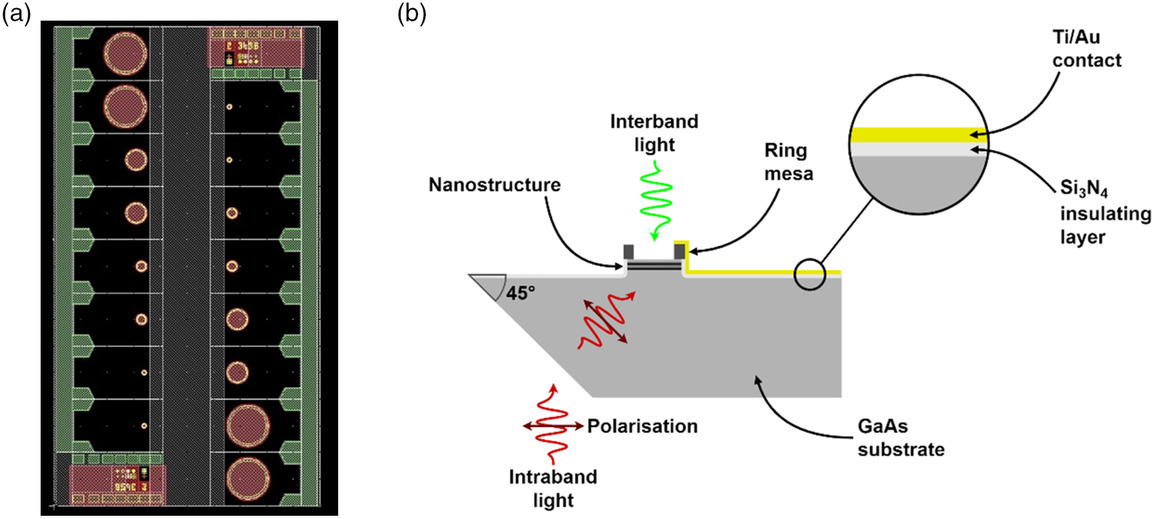An international research team has developed a new intermediate band solar cell (IBSC) design that includes a quantum ratchet (QR) semiconductor nanostructure. This new element reportedly enables storing photoelectrons in a long-lived state, thus enabling efficient optical re-absorption.
Intermediate band solar cells (IBSCs) are believed to have the potential to exceed the Shockley-Queisser limit – the maximum theoretical efficiency that a solar cell with a single p-n junction can reach. It is calculated by examining the amount of electrical energy that is extracted per incident photon.
The devices are commonly designed to provide a large photogenerated current and maintain a high output voltage. They incorporate an energy band that is partly filled with electrons within the bandgap of a semiconductor. In this cell configuration, photons with insufficient energy to push electrons from the valence band to the conduction band utilize this intermediate band to generate an electron-hole pair.
The scientists said that past research demonstrated a QR-IBSC device using a quantum well superlattice (QWSL) at a low temperature.
“This approach involved adding a set of ‘ratchet band' (RB) states, into which the electrons scatter irreversibly, at the cost of a small energy penalty,” they said.
Their new design builds on this cell structure, which is also known as the Vaquero–Stainer Device (VSD). The new High Barrier Device (CHB) design purportedly increases the RB state lifetime and makes cell operation possible at room temperature.
In the proposed cell configuration, an extra 2 nm thick layer of aluminum arsenide (AlAs) films is inserted between the final quantum well of the QWSL and a wide layer made of multiple quantum wells based on aluminum, gallium and arsenide (Al0.3Ga0.7As), which act as the conduction band (CB).
“This AlAs barrier increases the confinement of electrons in the RB, reducing thermal escape,” the academics stated, noting that they used a high-speed double-demodulation two-photon spectroscopy setup to measure two-photon photocurrent (TPP).
They fabricated the cell with an undoped GaAs substrate using molecular beam epitaxy and a buffer layer made of the same material. They also used rings of gold with a thickness of 200 nanometers on 20-nanometer-thick titanium around for the front-side electrical contact and metalized the front of the device with layers of gold and zinc.
They also used a partial etch for the back-side electrical contact, which was then metalized with indium (In) and germanium (Ge) and connected to a gold strip.
“The back-side of the device was polished to a 45-degree chamfer in order to refract the intraband beam which was incident on the back of the device,” said the researchers.
The scientists found that the RB state lifetime in the HBD design is of over 100 s at 12 Kelvin (K), which they said is an improvement by seven orders of magnitude compared to that of the Vaquero-Stainer cell and other VSD designs.
“This led to the successful operation of the device at 300 K, representing significant progress in the field of IBSCs,” they said.
The group presented the new cell design in “Room Temperature Operation of a Quantum Ratchet Intermediate Band Solar Cell,” which was recently published in RRL Solar. It includes scientists from Imperial College London in the United Kingdom and the University of New South Wales (UNSW) in Australia.
“Future generations of the device should now be developed, whose bandgaps better match the solar spectrum, and with designs which improve the efficiency of photon capture and RB-to-CB extraction,” they concluded.
This content is protected by copyright and may not be reused. If you want to cooperate with us and would like to reuse some of our content, please contact: editors@pv-magazine.com.




By submitting this form you agree to pv magazine using your data for the purposes of publishing your comment.
Your personal data will only be disclosed or otherwise transmitted to third parties for the purposes of spam filtering or if this is necessary for technical maintenance of the website. Any other transfer to third parties will not take place unless this is justified on the basis of applicable data protection regulations or if pv magazine is legally obliged to do so.
You may revoke this consent at any time with effect for the future, in which case your personal data will be deleted immediately. Otherwise, your data will be deleted if pv magazine has processed your request or the purpose of data storage is fulfilled.
Further information on data privacy can be found in our Data Protection Policy.